Current Issues
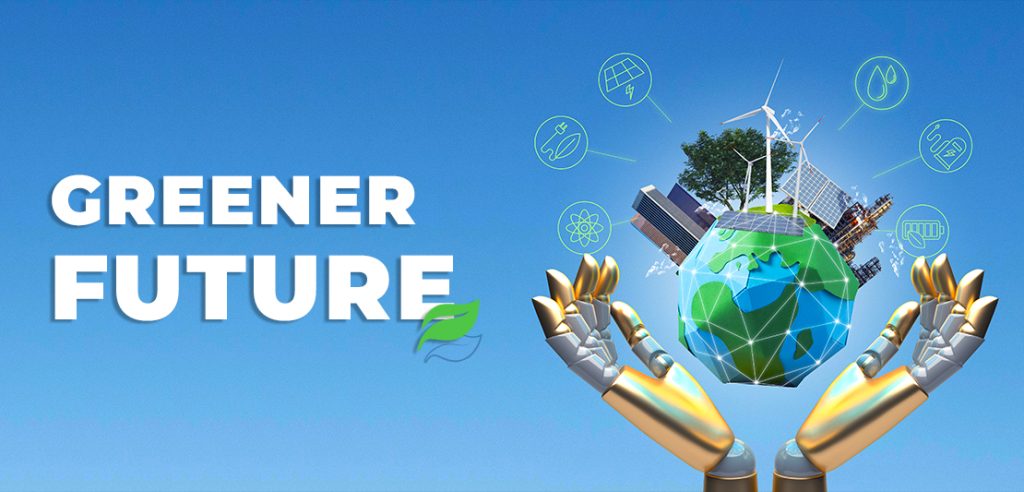
Sustainable Social Development: A Way to Build a Better Future for Everyone
Sustainable social development is essential for creating a future that is fair, inclusive, and prosperous for all. It is a concept that goes beyond economic growth, emphasizing the need for social justice, equal opportunities, and environmental protection. As societies continue to face significant challenges like poverty, inequality, and climate change, sustainable social development aims to solve these problems in ways that ensure long-term well-being for all communities, particularly the most vulnerable. What is Sustainable Social Development? Sustainable social development focuses on creating a balanced society where economic, social, and environmental factors work together for the common good. It prioritizes the welfare of people, the protection of the environment, and the fair distribution of resources. Unlike traditional development models that prioritize growth at the cost of the environment or social welfare, sustainable development seeks to address today’s needs without compromising the ability of future generations to meet their own needs. Key Areas of Sustainable Social Development To build a sustainable future, several key areas require focused attention: 1. Education for All: Education is one of the most powerful tools for breaking the cycle of poverty. Ensuring access to quality education for every child, especially in underserved communities, empowers individuals to improve their lives and contribute to society. Education also promotes awareness about sustainable practices and helps individuals make informed choices. 2. Healthcare Access: A healthy society is vital for sustainable development. Affordable healthcare ensures that people live longer, more productive lives. It reduces the burden of disease, boosts the economy, and contributes to the overall well-being of the community. Access to healthcare services must be equitable, especially for marginalized groups such as rural populations, women, and children. 3. Poverty Reduction: Sustainable social development involves addressing poverty through long- term solutions. Programs that focus on skill development, job creation, and support for small businesses can help lift individuals out of poverty. Ensuring access to financial services, social security, and welfare programs helps create self-sufficiency and economic mobility for vulnerable populations. 4. Gender Equality: Gender equality is not just a matter of fairness; it is essential for a thriving society. Empowering women and girls through education, economic opportunities, and equal rights contributes to stronger communities. When women have the same opportunities as men, the entire society benefits. Gender equality fosters a more cohesive, prosperous, and sustainable society. 5. Environmental Protection: Sustainable development cannot be achieved without protecting the environment. As the world faces the growing threat of climate change, it is crucial to adopt practices that reduce pollution, conserve natural resources, and protect biodiversity. This includes using renewable energy, recycling waste, and reducing carbon emissions. A healthy planet is necessary for long-term economic and social stability. The Role of Government and Local Initiatives Governments play a vital role in ensuring that sustainable social development goals are achieved. Policies and laws that promote social welfare, environmental protection, and equal opportunities are key to driving progress. At the international level, the United Nations’ Sustainable Development Goals (SDGs) provide a framework for governments to align their actions with global priorities. In India, various local initiatives have been implemented to foster sustainable social development. Cities like Delhi are focusing on improving public transportation, reducing air pollution, and creating green spaces to make urban living more sustainable. Programs aimed at improving sanitation, water conservation, and waste management are also being prioritized to promote a cleaner, healthier environment. While significant strides have been made, challenges remain in areas such as poverty, education, and healthcare. Resources are often limited, and political and social barriers can slow progress. However, with sustained efforts and greater collaboration between government bodies, businesses, and communities, these challenges can be overcome. Overcoming Challenges to Sustainability Sustainable development faces many obstacles, including economic disparities, political instability, and environmental degradation. In India, rapid urbanization has led to overcrowded cities, increased pollution, and strained resources. Additionally, social inequalities such as caste-based discrimination and gender bias continue to affect marginalized communities. To overcome these challenges, there must be greater emphasis on inclusivity and the fair distribution of resources. Government policies need to focus on providing equal access to education, healthcare, and economic opportunities. Public awareness campaigns can also play an important role in changing attitudes and encouraging sustainable lifestyles. The Role of Communities and Individuals While governments and organizations play a significant role, communities and individuals also have an essential part to play in sustainable social development. At the grass-roots level, local initiatives can create a positive impact. Residents of Delhi, for example, are increasingly participating in recycling programs, conserving water, and adopting green technologies. Every individual has the responsibility to contribute to a sustainable future. Simple actions such as reducing waste, saving energy, supporting local businesses, and advocating for environmental protection can make a difference. Community members must work together to raise awareness, create supportive networks, and drive local initiatives. Moving Forward: A Shared Responsibility Sustainable social development is a shared responsibility. It requires the combined efforts of governments, businesses, and individuals. By investing in education, healthcare, gender equality, and environmental sustainability, we can build a society that benefits everyone. As we move forward, it is essential to remember that true progress is not just about economic growth but about improving the quality of life for all people and protecting the planet for future generations. In conclusion, sustainable social development is a journey that requires commitment from all sectors of society. By working together, we can create a future where economic, social, and environmental goals are met in harmony, ensuring a better tomorrow for all.
Read More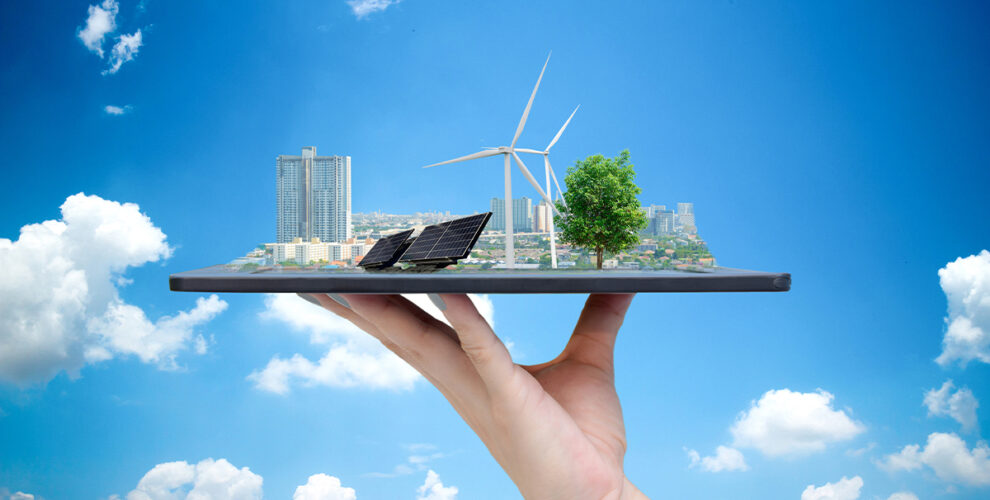
Renewable Energy and Sustainable Global Development
As our planet faces mounting challenges from climate change and resource depletion to environmental degradation renewable energy is rapidly becoming a cornerstone of the quest for sustainable development. Shifting from traditional energy sources to renewable ones like solar, wind, hydro and geothermal doesn’t just help reduce carbon emissions and slow climate change. It also holds the key to achieving broader goals in economic, social and environmental sustainability. This transition to cleaner, greener energy is central to realizing the United Nations’ Sustainable Development Goals (SDGs), ensuring a better, more equitable future for everyone. The Crucial Role of Renewable Energy in Reducing Carbon Emissions One of the most vital contributions of renewable energy is its ability to cut carbon emissions. The burning of fossil fuels like coal, oil and natural gas remains the largest source of greenhouse gases that are driving climate change. While these energy sources have powered modern society for centuries, their environmental cost is too high to ignore. By contrast, renewable energy sources generate electricity with little to no carbon emissions. Solar panels, wind turbines and hydropower plants tap into natural resources that are abundant, clean and sustainable. Transitioning to these energy sources reduces our carbon footprint and mitigates the harmful effects of global warming, including rising sea levels, extreme weather events and disruptions to ecosystems. For countries committed to reaching net-zero emissions, the switch to renewable energy is non-negotiable. Expanding Energy Access and Fostering Equity Renewable energy also plays a vital role in providing electricity to underserved regions particularly in developing countries where energy access is critical to economic growth and poverty reduction. According to the International Energy Agency (IEA), over 800 million people still lack access to electricity, most of them living in sub-Saharan Africa and rural parts of Asia. Expanding renewable energy access is essential to meeting the SDG of affordable and clean energy for all (SDG 7). Traditional energy infrastructure, like fossil fuel-based power plants and large-scale grids, can be expensive and challenging to implement in remote or rural areas. In contrast, renewable energy technologies such as solar panels, small-scale wind turbines and off- grid solutions are decentralized, scalable and more affordable for communities without access to existing electricity infrastructure. By leveraging renewable energy, countries can bring reliable power to millions of people, improving education, healthcare and economic opportunities. For instance, solar-powered schools and clinics in rural areas can offer essential services to communities that would otherwise lack access to modern infrastructure. This doesn’t just power homes it powers hope and progress. In this way, renewable energy helps reduce inequalities and fosters social inclusion, key pillars of sustainable development. Economic Growth and Job Creation in the Green Energy Sector Beyond environmental and social benefits, renewable energy offers significant economic advantages. The International Renewable Energy Agency (IRENA) reported that by 2021, the renewable energy sector employed over 12 million people worldwide a number expected to rise as the global transition to clean energy accelerates. Jobs in solar panel manufacturing, wind turbine construction and energy storage are generating new employment opportunities, especially in developing countries where unemployment can be high. Renewable energy technologies are labor-intensive, meaning they have the potential to create more jobs per unit of energy produced compared to fossil fuel industries. Additionally, investing in renewable energy infrastructure stimulates local economies by attracting investments and driving innovation. As renewable energy technologies become more widespread and affordable, they also create new markets for energy-efficient products, sustainable building materials and green technologies. This green innovation not only drives economic diversification but also builds resilience, reducing a country’s dependence on the volatile fossil fuel market and creating long-term, sustainable growth opportunities. Environmental Sustainability: Protecting Our Planet At its core, the renewable energy transition is about protecting and preserving our environment. Fossil fuel extraction and consumption have long been linked to environmental harm deforestation, air and water pollution, habitat destruction and loss of biodiversity. In contrast, renewable energy has a much smaller environmental footprint. While producing solar panels, wind turbines and batteries does come with some environmental impact, it’s negligible compared to the ongoing damage caused by burning fossil fuels. Moreover, renewable energy reduces pressure on finite natural resources. Unlike fossil fuels, which are limited and becoming harder and more expensive to extract, renewable energy sources are abundant and, for the most part, inexhaustible. Sunlight and wind are available everywhere and where feasible, hydropower provides a reliable source of energy. Harnessing these resources in a sustainable way allows us to meet our energy needs without depleting the Earth’s finite resources or destroying ecosystems. Challenges in the Transition to Renewable Energy While the benefits of renewable energy are clear, the global transition is not without challenges. One of the primary obstacles is the intermittency of some renewable energy sources, such as solar and wind power, which depend on weather conditions. To address this, energy storage technologies, like advanced batteries, are essential. These technologies allow us to store excess energy produced during sunny or windy periods for use when production is low. Although progress has been made in recent years, energy storage remains expensive and, in many developing regions, not yet widely accessible. Another hurdle is the upfront capital required to build renewable energy infrastructure. While the operational costs of renewable energy are typically lower than those of fossil fuels in the long run, the initial investment for technologies like solar farms, wind turbines and grid upgrades can be prohibitively high, particularly for developing countries. Financial support from international organizations, governments and private investors is crucial to overcome these challenges and ensure a smooth, equitable transition to renewable energy worldwide. A Path to a Brighter, More Sustainable Future Renewable energy is essential for achieving sustainable global development. It provides cleaner, more efficient energy solutions, fosters economic growth, expands energy access and helps protect the environment. In doing so, it addresses some of the most pressing issues of our time climate change, poverty and inequality. However, realizing the full potential of renewable energy requires a collective effort from governments, businesses and individuals alike to invest in the technologies, policies and infrastructure that will pave the way to a low-carbon future. The shift to renewable energy is not just an environmental or technological challenge it’s a moral one. It’s about securing a sustainable, prosperous and equitable world for future generations. Through global cooperation and a shared commitment to renewable energy, we have the opportunity to build a more resilient and sustainable global economy one that works for both people and the planet. Together, we can light the way toward a brighter, greener future.
Read More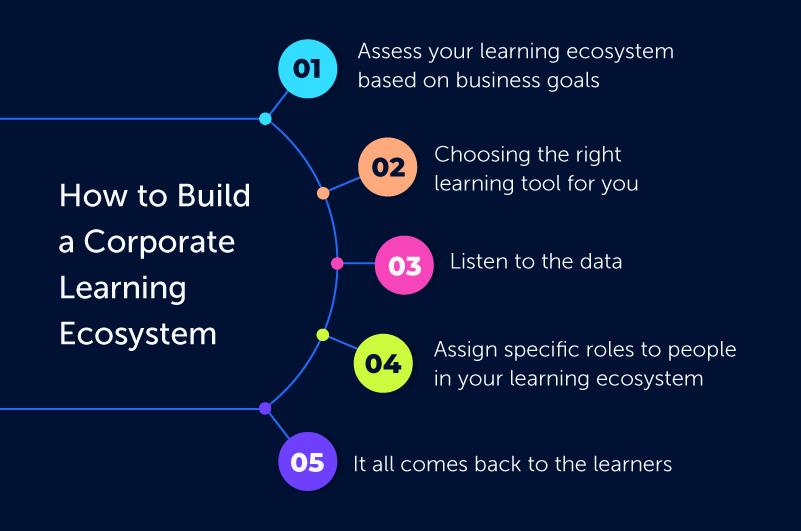
The role of EdTech in building a Sustainable Learning Ecosystem
As the world faces growing environmental challenges, education technology (EdTech) is increasingly seen as a vital tool in building a sustainable learning ecosystem. Leveraging digital platforms, online learning, and interactive software, EdTech offers ways to minimize resource usage while improving education accessibility and quality. Understanding how EdTech contributes to sustainability requires us to look at how it reduces traditional educational impacts and promotes more environmentally friendly learning methods. One of the main environmental benefits of EdTech is its potential to reduce physical resource consumption. Traditional education often requires substantial use of paper, as well as resources for physical facilities, which all add to carbon emissions. According to the Environmental Paper Network, a reduction in paper use could significantly cut down deforestation rates, and adopting EdTech is one practical way to address this issue. Additionally, digital learning platforms allow for repeated access to study materials and resources, minimizing the need for printed materials and thus supporting resource efficiency. The energy efficiency of online education compared to conventional classroom setups is also notable. A study by Open University in the UK found that distance learning courses use 87% less energy and produce 85% fewer carbon emissions than traditional campus-based programs. This reduction is largely due to the decreased need for students and teachers to commute, as well as less dependence on physical infrastructure, lighting, and other energy-demanding facilities. These findings suggest that integrating online and hybrid models within education can play a significant role in reducing the carbon footprint of educational institutions. EdTech also promotes sustainability through the flexibility of learning at any place and time, which is especially beneficial for underserved and rural communities. A UNESCO report revealed that globally, over 244 million children are still out of school due to various barriers, such as geographical isolation or lack of resources. EdTech enables these communities to access quality education without the need to travel long distances. In turn, this access helps lower indirect environmental costs, like transportation, and supports a more inclusive and equitable learning model for sustainable development. Moreover, major EdTech companies are committing to environmentally friendly practices. For example, Google has committed to running its data centers on 100% renewable energy and making their products more sustainable by designing them to last longer and reducing e-waste. Dell Technologies is similarly committed to sustainability, implementing practices like using recycled materials in its products and packaging. These corporate initiatives showcase the possibilities of integrating sustainable principles within EdTech, allowing education providers to align with environmentally responsible partners and models. Despite these advantages, EdTech does come with environmental costs, such as the energy consumption of data centers and the e-waste generated from devices. Data centers, essential to online learning platforms, require significant power, contributing to greenhouse gas emissions. Therefore, managing these impacts calls for conscious efforts in energy optimization, like using renewable energy sources and promoting device recycling and reuse. Tools like Open University’s SusTEACH Carbon Calculator allow students and educators to assess and understand their digital learning impact, which raises awareness and encourages more sustainable practices in education. In conclusion, EdTech has demonstrated a significant capacity to support a sustainable learning ecosystem by reducing traditional educational resource demands and increasing accessibility. However, to maximize its environmental benefits, it’s essential for EdTech initiatives to continuously innovate with sustainability in mind. From the adoption of energy-efficient technology to supporting sustainable product lifecycles, EdTech offers a promising path toward greener education. By adopting these approaches, the educational sector can play a vital role in building a sustainable future, empowering learners and educators to contribute actively to environmental conservation efforts.
Read More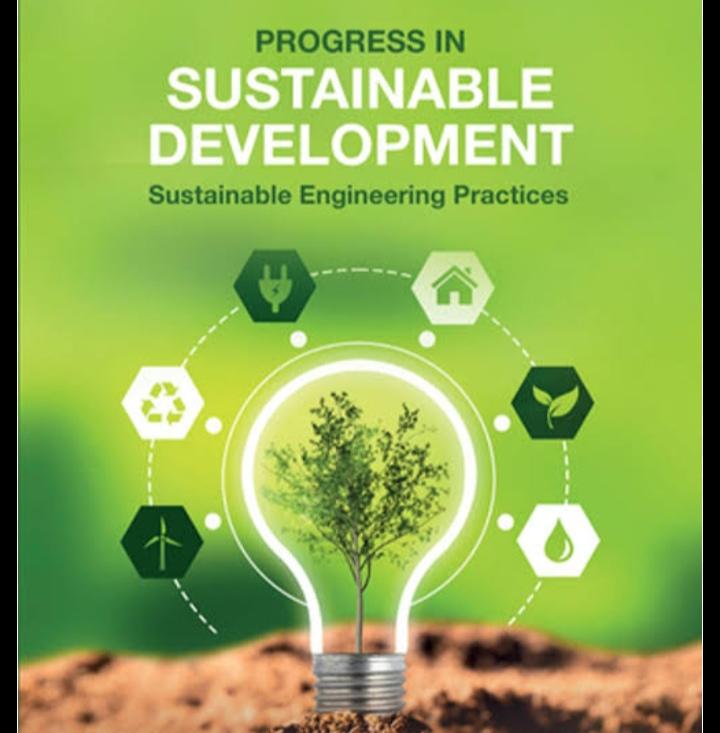
Sustainable Development Goals: India’s Path to a Better Future
The Sustainable Development Goals (SDGs), adopted by the United Nations in 2015, provide a global roadmap for achieving economic growth, social inclusion, and environmental sustainability by 2030. With 17 goals and 169 targets, the SDGs address critical challenges like poverty, hunger, education, gender equality, clean energy, and climate action. India, as the world’s fifth-largest economy and home to 1.4 billion people, plays a key role in global sustainability efforts. The country has made significant progress in areas like poverty reduction, renewable energy, and digital inclusion, but challenges remain in sectors such as healthcare, education, climate resilience, and urban planning. No Poverty (SDG 1) aims to eradicate extreme poverty worldwide. India has made notable progress in poverty reduction, with 271 million people lifted out of multidimensional poverty between 2005 and 2016. Government schemes like Pradhan Mantri Jan Dhan Yojana (financial inclusion), PM Garib Kalyan Yojana (food security), and Mahatma Gandhi National Rural Employment Guarantee Act (MGNREGA) have contributed significantly. However, rural poverty, job insecurity, and rising inflation remain challenges. Zero Hunger (SDG 2) focuses on ending hunger and ensuring food security. India is one of the largest food producers, yet malnutrition remains a major concern. Government programs like Poshan Abhiyaan, Mid-Day Meal Scheme, and the Public Distribution System (PDS) have improved food availability, but challenges like food wastage, poor nutrition awareness, and agricultural distress persist. Strengthening sustainable agriculture and ensuring efficient food distribution are key to addressing hunger. Good Health and Well-being (SDG 3) emphasizes accessible healthcare for all. India’s Ayushman Bharat scheme provides free health insurance to over 500 million people, and the country has successfully eradicated polio. However, challenges like poor rural healthcare infrastructure, high maternal mortality rates, and rising non-communicable diseases require urgent attention. The COVID-19 pandemic highlighted the need for a stronger public health system and investment in medical research. Quality Education (SDG 4) ensures inclusive and equitable education. India has improved school enrollment rates, with initiatives like Sarva Shiksha Abhiyan, National Education Policy (NEP) 2020, and Digital India e-learning programs. However, high dropout rates, lack of infrastructure in rural schools, and digital inequality remain concerns. Expanding vocational training, skill development, and access to online education can bridge learning gaps. Gender Equality (SDG 5) promotes women’s empowerment. India has seen progress through schemes like Beti Bachao Beti Padhao (girl child education), Ujjwala Yojana (clean cooking fuel), and Maternity Benefit Program. Despite improvements, gender pay gaps, domestic violence, and low female workforce participation remain key challenges. Strengthening legal frameworks, women entrepreneurship programs, and gender-sensitive workplaces is crucial. Clean Water and Sanitation (SDG 6) focuses on access to safe drinking water and sanitation. The Jal Jeevan Mission aims to provide tap water to every rural household by 2024, and the Swachh Bharat Abhiyan successfully improved sanitation facilities. However, groundwater depletion, water pollution, and urban water shortages require urgent intervention. Water conservation techniques like rainwater harvesting and wastewater treatment need expansion. Affordable and Clean Energy (SDG 7) ensures access to sustainable energy. India is a global leader in renewable energy, with ambitious targets of achieving 500 GW of non-fossil fuel capacity by 2030. Programs like Ujjwala Yojana (clean cooking fuel) and solar energy subsidies have promoted energy access, but challenges remain in rural electrification and transitioning away from coal dependence. Decent Work and Economic Growth (SDG 8) promotes sustainable economic growth and job opportunities. India’s Make in India, Skill India, and Startup India initiatives have boosted employment, but unemployment, informal labor, and income inequality persist. Strengthening labor laws, digital skilling programs, and fair wage policies is essential for inclusive growth. Industry, Innovation, and Infrastructure (SDG 9) focuses on sustainable industrialization. India is advancing in digital connectivity and manufacturing through Atmanirbhar Bharat and Smart Cities initiatives. However, MSMEs (Micro, Small, and Medium Enterprises) still struggle with funding and technology adoption. Expanding public-private partnerships and digital infrastructure can boost innovation. Reduced Inequality (SDG 10) calls for equal opportunities. India’s reservation policies, financial inclusion programs, and social welfare schemes aim to address disparities. However, caste-based discrimination, gender inequality, and rural-urban income gaps continue. Expanding economic empowerment programs and ensuring equal digital access is necessary. Sustainable Cities and Communities (SDG 11) focuses on urban development. With rapid urbanization, challenges like slums, traffic congestion, and pollution have worsened. The Smart Cities Mission and Metro Rail expansion are improving urban infrastructure, but affordable housing, waste management, and public transport need stronger policies. Responsible Consumption and Production (SDG 12) promotes sustainable resource use. India has banned single-use plastics, but high industrial waste, food wastage, and unsustainable consumer habits remain issues. Encouraging eco-friendly products, circular economy models, and corporate responsibility is crucial. Climate Action (SDG 13) is a major concern for India, which is vulnerable to floods, droughts, and heatwaves. The National Action Plan on Climate Change (NAPCC) promotes renewable energy and afforestation, but stronger emission reduction policies and disaster management strategies are needed. Life Below Water (SDG 14) and Life on Land (SDG 15) focus on protecting ecosystems. India’s coastlines and biodiversity are at risk due to pollution and deforestation. Initiatives like Project Tiger, Green India Mission, and Blue Economy projects help, but stricter conservation policies and sustainable fishing practices are required. Peace, Justice, and Strong Institutions (SDG 16) call for transparent governance. India’s Digital Governance, RTI Act, and E-courts system have improved justice delivery, but corruption, judicial delays, and human rights issues need stronger interventions. Partnerships for the Goals (SDG 17) emphasize global cooperation. India plays an active role in G20, BRICS, and UN initiatives, working on global sustainability projects. Strengthening private sector involvement, CSR initiatives, and international collaborations will accelerate progress. India has made significant strides in achieving SDGs, but challenges like climate change, economic inequality, and resource management require collective action from the government, businesses, and citizens. With a strong policy framework, technological advancements, and social awareness, India can lead the way toward a sustainable future. The next decade is crucial, and achieving the SDGs will determine the nation’s long-term economic and social prosperity.
Read More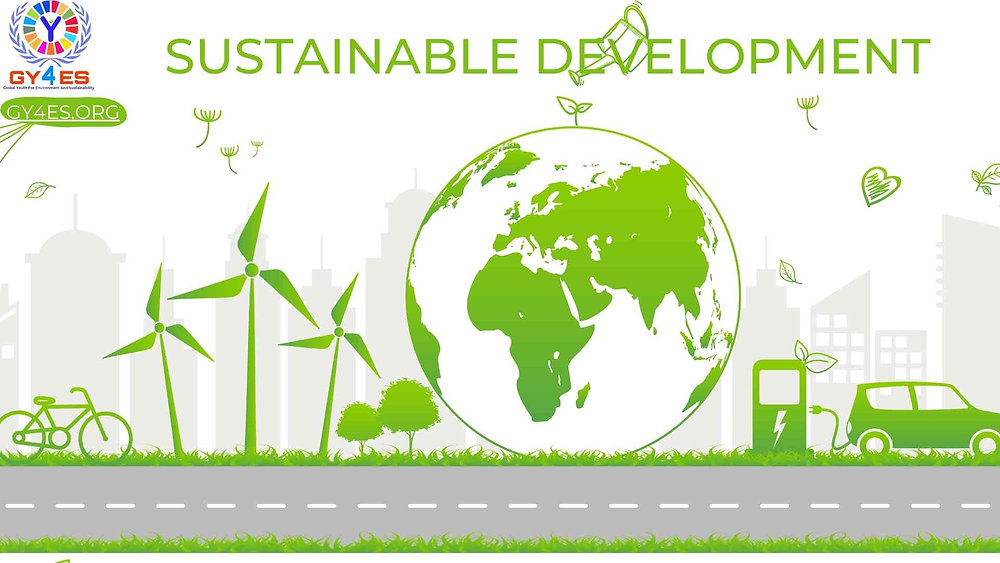
Sustainable Global Development: A Path towards a Better Tomorrow
The world stands at a critical juncture where the need for sustainable development is no longer optional but essential. With pressing global challenges such as climate change, resource depletion, and social inequality, the concept of sustainable global development aims to ensure economic growth, environmental protection, and social equity for current and future generations. What is Sustainable Global Development? Sustainable global development refers to a model of progress that meets the needs of the present without compromising the ability of future generations to meet their own needs. It focuses on balancing three critical pillars: 1. Economic Sustainability – Promoting economic growth and innovation while ensuring equitable resource distribution. 2. Environmental Sustainability – Preserving natural ecosystems, reducing carbon footprints, and transitioning to renewable energy sources. 3. Social Sustainability – Creating inclusive societies that provide equal opportunities, education, and healthcare for all. Challenges in Achieving Sustainable Development Despite widespread recognition of its importance, achieving sustainable global development is fraught with challenges: Overdependence on Fossil Fuels: A significant contributor to global warming. Inequitable Resource Distribution: Widening the gap between rich and poor nations. Political Resistance: Policies often hindered by short-term goals and vested interests. Lack of Awareness: Insufficient understanding and prioritization of sustainability in many regions. Innovative Solutions and Global Efforts Many nations, organizations, and individuals are pioneering initiatives to tackle these challenges: 1. Renewable Energy Revolution: Countries like Sweden and Germany are leading the way in shifting to solar, wind, and hydroelectric power. 2. Circular Economy Models: Companies are adopting practices to recycle, reuse, and reduce waste. 3. Global Agreements: Frameworks like the Paris Agreement emphasize collaborative efforts to reduce carbon emissions. 4. Education for Sustainability: Programs promoting awareness of sustainable lifestyles are being integrated into school curriculums. India’s Role in Sustainable Development As one of the fastest-growing economies, India has a pivotal role in shaping global sustainability. Initiatives like the *National Solar Mission, **Clean Ganga Project*, and the promotion of electric vehicles reflect the country’s commitment to green development. Additionally, community-led efforts such as organic farming and afforestation are making a significant impact at the grassroots level. Sustainable global development is not just an ideal but a necessity to safeguard the planet and its inhabitants. Achieving it requires collective action, innovative thinking, and a shift in mindset toward long-term solutions. By prioritizing sustainability in every decision we make, we can create a resilient world that thrives economically, ecologically, and socially for generations to come.
Read More
India's Pioneering Role in Sustainable Global Mobility: Insights from the Bharat Mobility Global Expo 2025
India is emerging as a key player in the global push toward sustainable mobility. The Bharat Mobility Global Expo 2025, held in New Delhi, reinforced India's commitment to green transportation by showcasing cutting-edge innovations in electric vehicles (EVs) and related technologies. The event provided a platform for stakeholders across the automotive industry to exchange ideas, demonstrate breakthroughs, and reinforce India’s role in shaping a sustainable future for mobility. This article explores India's contributions, government initiatives, challenges, and future prospects in driving the sustainable mobility revolution globally. The Bharat Mobility Global Expo 2025 served as a landmark event, bringing together leading automakers, technology providers, policymakers, and investors. The expo highlighted India's progress in EV manufacturing, charging infrastructure, and alternative energy solutions. Over 90 product launches took place in the first few days of the event, illustrating the industry's rapid transition toward sustainability. Among the major highlights were VinFast Auto India's debut of all-electric Premium SUVs, the VF 7 and VF 6, designed for the Indian market. BMW India unveiled the all-new MINI Cooper S John Cooper Works Pack and the BMW X3, while JSW MG Motor India showcased Hybrid Electric Vehicles (HEVs), Plug-in Hybrid Electric Vehicles (PHEVs), and Battery Electric Vehicles (BEVs). These product launches reflect the automotive industry’s alignment with India’s vision for sustainable transportation. The Indian government has played a crucial role in promoting electric vehicles and sustainable mobility solutions through various policies and incentives. The PM E-DRIVE (Electric Drive Revolution for India’s Value and Efficiency) incentive scheme, valued at $1.3 billion, aims to boost EV adoption across multiple vehicle segments, including two-wheelers, three-wheelers, ambulances, and commercial trucks. Some of the major policy measures driving this transformation include the Faster Adoption and Manufacturing of Hybrid and Electric Vehicles (FAME) Scheme, which provides financial incentives for electric vehicles, making them more affordable for consumers and businesses. Additionally, the Production-Linked Incentive (PLI) Scheme for Advanced Chemistry Cell (ACC) Battery Storage encourages domestic production of batteries, reducing reliance on imports and lowering costs. State-level EV policies also play a significant role, as various Indian states have introduced policies that provide tax benefits, subsidies, and incentives for manufacturers and consumers to promote EV adoption. These policy initiatives are accelerating India’s transition to a low-carbon mobility ecosystem. India's EV market is growing rapidly, driven by increased consumer awareness, policy support, and advancements in technology. While electric cars currently account for only around 2% of total vehicle sales, this figure is expected to rise significantly in the coming years. Several factors are driving this growth. Declining battery costs, for instance, are making EVs more competitive with internal combustion engine (ICE) vehicles. Advances in battery technology and large-scale production are reducing costs, helping to make EVs more accessible. Additionally, the expansion of charging infrastructure is crucial. The Indian government and private players are investing in expanding the EV charging network across the country. Companies like Tata Power, Reliance, and BPCL are installing fast-charging stations to support long-distance travel, making EV adoption more practical for consumers. Increased consumer interest is also fueling the shift toward EVs. With rising fuel prices and growing environmental concerns, more consumers are considering EVs as a viable alternative to traditional vehicles. However, to maintain this momentum, further infrastructure development and policy incentives are needed. Despite significant progress, India faces several challenges in scaling up EV adoption. High initial costs remain a major hurdle. While EV prices are decreasing, they still remain higher than ICE vehicles, making affordability an issue for many consumers. Government subsidies are helping to bridge this gap, but more efforts are required to make EVs financially accessible to a broader population. Charging infrastructure gaps also pose a challenge. Although charging networks are expanding, rural and semi-urban areas still lack adequate infrastructure, limiting EV adoption beyond major cities. Battery supply chain dependence is another concern. India relies heavily on imports for lithium-ion batteries, which increases costs and makes the country vulnerable to global supply chain disruptions. Strengthening domestic battery production is crucial for long-term sustainability. Additionally, consumer awareness and hesitancy continue to slow down EV adoption. Many consumers remain skeptical about EV performance, range, and charging availability. Addressing these concerns through education, marketing, and incentives will be critical for increasing adoption rates. India is not just transforming its domestic mobility landscape but is also making a significant impact on the global stage. The country is positioning itself as a leader in EV manufacturing and exports. Key developments include India's emergence as a hub for EV components such as batteries, motors, and power electronics, catering to global demand. Moreover, India is investing in green hydrogen as an alternative fuel to complement battery-powered vehicles. This shift toward hydrogen fuel cell technology has the potential to revolutionize sustainable mobility and make India a leader in the sector. Collaborations with global players are also strengthening India's role in the EV supply chain. International partnerships and joint ventures with companies like Tesla, Toyota, and Volkswagen are helping India integrate with the global EV industry. This integration not only enhances India's technological capabilities but also opens up opportunities for exports and investment in the EV sector. Looking ahead, India aims to achieve significant milestones in sustainable mobility by 2030. The government has set ambitious targets, including achieving 30% EV penetration in the passenger vehicle segment and higher adoption in two-wheeler and commercial vehicle categories. India also aims to achieve net-zero carbon emissions in the transportation sector by increasing the share of renewable energy in EV charging infrastructure. Scaling up domestic battery production is another priority, as reducing dependence on imports will help lower the overall cost of EVs and make them more accessible to consumers. Additionally, strengthening public transportation electrification is a key focus. Expanding electric bus fleets in major cities will contribute to reducing emissions and promoting cleaner urban mobility. By implementing these measures, India is well on its way to establishing itself as a global leader in green transportation. India's role in sustainable global mobility is growing stronger, with the Bharat Mobility Global Expo 2025 serving as a testament to its progress. The combination of government policies, industry investments, and technological advancements is propelling India toward becoming a global leader in green transportation. While challenges remain, strategic efforts in infrastructure development, battery production, and consumer awareness will help India accelerate its EV transition and contribute to a cleaner, more sustainable future for mobility worldwide. India's proactive approach in addressing these challenges and leveraging opportunities will not only benefit its domestic market but will also set an example for other nations looking to transition towards sustainable mobility. As the world shifts towards a greener future, India's leadership in the EV sector will play a crucial role in shaping the global landscape of sustainable transportation.
Read More





